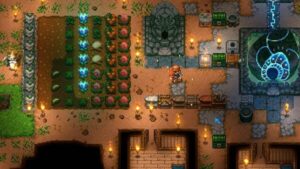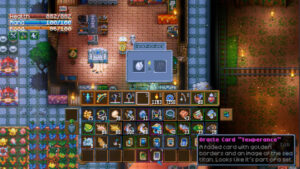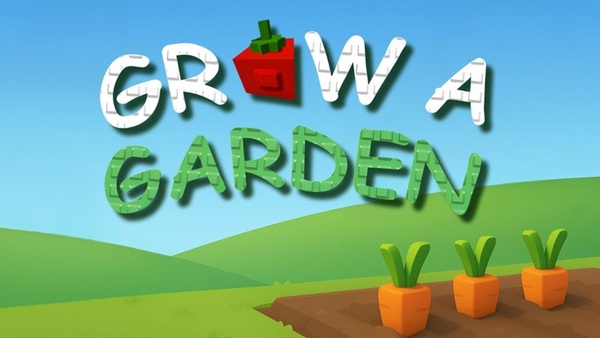Popular Now
Introduction
In the indie game landscape, Core Keeper stands out as a blend of exploration, crafting, and survival mechanics. Developed by Pugstorm and published by Fireshine Games, it combines classic elements from games like Terraria and Stardew Valley, while offering unique mechanics that make it stand apart. However, like many survival games, Core Keeper offers a distinct set of challenges that players must overcome. One such challenge, which forms the focus of this deep dive, is the game's resource management system.While resource management in games is not a new concept, Core Keeper has a particularly intricate approach that requires players to balance limited resources, environmental factors, and exploration. This challenge becomes especially daunting as players progress through the game, encountering new biomes, crafting recipes, and enemies that demand constant attention and adjustment of their resource strategies. This article will explore the core issues tied to resource management in Core Keeper, examining the complexities, frustrations, and potential solutions to the resource challenges that players face throughout the game.

1. The Foundation of Resource Management in Core Keeper
Resource Categories and Their Importance
Core Keeper features several different types of resources that players can gather during their exploration. These resources fall into multiple categories, such as ores, wood, food, and materials for crafting. At the start of the game, players have a relatively simple time managing resources, as the basic materials like copper, wood, and stone are abundant and straightforward. However, as players venture deeper into the game’s biomes, resource management becomes much more nuanced.
Limited Resources and Growing Needs
A key feature of Core Keeper is the scarcity of critical resources, which players must carefully manage. Early-game materials are easy to collect, but later on, resources like ores and other rarer materials become increasingly scarce and harder to acquire. Players are forced to explore new areas to find specific resources required for advanced crafting and building. This evolving scarcity ramps up the difficulty of resource management significantly as the game progresses.
2. The Role of Exploration in Resource Acquisition
Biomes and Resource Diversity
Each biome in Core Keeper contains its own unique resources, adding a layer of complexity to the resource management system. For example, the Forest biome offers wood and copper ores, while the Desert biome provides rare ores like gold and special plants for crafting. Understanding the relationship between biomes and resource types is critical, as it determines where players should focus their efforts.
As players advance through the game, they are encouraged to explore more challenging biomes for increasingly rare resources. This adds a sense of progression but also creates pressure to manage resources effectively, balancing exploration with the limited availability of food and other essential supplies.
Navigating Dangerous Terrain
However, exploration comes with a significant risk. New biomes are often filled with hostile creatures and environmental hazards that can deplete players' resources quickly. For example, players may be in a situation where they need to gather rare materials in a hostile area but have limited health potions or other resources to sustain them during the expedition. This creates tension in gameplay, where players must decide whether to venture deeper into dangerous territory in search of better resources or return to safer zones to restock.

3. The Necessity of Efficient Resource Storage
Managing Space in the Early Game
One of the earliest struggles players face in Core Keeper is the lack of storage space. Players begin with minimal storage options and must manage their collected resources with limited inventory space. This forces players to make tough decisions about which resources to keep and which to leave behind. While players can craft chests to increase storage, these options often come too late in the game, leading to unnecessary frustration as items accumulate faster than they can be organized.
Advanced Storage Solutions
As players progress through the game, they unlock better storage systems such as larger chests and even automated storage solutions. However, these upgrades are costly and require resources that can be hard to come by in the early to mid-game. In the late game, the need for highly organized and easily accessible storage becomes more crucial. Players are expected to have large quantities of different resources, and without the proper storage systems, keeping track of everything becomes overwhelming.
4. Crafting and Resource Consumption
The Complexity of Crafting Recipes
Crafting in Core Keeper is a central aspect of the gameplay, and each crafting recipe requires specific combinations of resources. While this mechanic adds depth to the game, it also compounds the resource management challenge. Players often need to collect large quantities of specific resources to craft advanced items or equipment, and the game does not always provide clear guidance on where to find these resources.
Additionally, some recipes require rare materials that can only be found in high-level biomes, forcing players to carefully balance their exploration efforts to avoid running out of essential crafting ingredients. This complexity makes efficient resource management even more essential, as players must prioritize their gathering efforts and decide which crafting projects are worth the investment of time and resources.
5. Farming and Sustainability
The Role of Farming in Resource Management
Core Keeper introduces farming as a key mechanic for sustainability, especially in the later stages of the game. Players can plant crops, grow food, and harvest resources that are vital for surviving in the increasingly dangerous biomes. However, farming in Core Keeper requires its own set of resources—seeds, fertilizers, and tools—that must be carefully managed alongside other survival needs.
The efficiency of a farming system hinges on players’ ability to balance time spent gathering resources versus time spent farming. Early in the game, farming is a supplementary activity, but as players progress and encounter more challenging environments, the role of farming becomes much more critical. The ability to grow food sustainably can make the difference between surviving a long exploration or being forced to retreat due to starvation or lack of supplies.
Managing Food and Resource Cycles
As the game encourages exploration into dangerous areas, players must also manage their food reserves. In particular, food is consumed as players travel, craft, and battle, adding an additional layer to the resource management challenge. Finding the right balance between farming, foraging, and crafting is essential to ensuring a steady supply of food, which is especially critical in the game's harder biomes.

6. The Challenge of Upgrading Equipment
The Need for Advanced Materials
Upgrading equipment in Core Keeper is an essential part of progressing through the game. However, the materials required to craft advanced gear and tools are often rare, and finding them can be a time-consuming task. This adds another level of complexity to resource management. Players may find themselves having to decide between upgrading their gear or spending resources on more critical needs, such as food or building materials.
The decision to upgrade equipment can also come with the risk of being poorly equipped in certain biomes. If players focus too heavily on gear and neglect resource gathering or exploration, they might find themselves unprepared for upcoming challenges. This balancing act is one of the core struggles that players face in Core Keeper, and it requires careful planning and foresight.
7. Combat and Resource Depletion
The Resource Drain of Combat
Combat in Core Keeper can be particularly resource-draining. Enemies drop valuable materials and experience points but often require significant resources to defeat. In the early game, players can defeat enemies without much strain, but as the game progresses and enemies become stronger, the resources required for combat—such as ammunition, healing items, and upgraded weapons—become increasingly expensive.
In high-stakes battles, players may find themselves running low on vital resources, forcing them to decide whether to risk further depletion or withdraw to safer zones to gather more supplies. This adds an additional layer of tension to the gameplay, especially in later stages, where every battle can lead to a large consumption of resources.

8. Automation and Resource Efficiency
Streamlining Resource Management
To combat the overwhelming complexity of resource management, Core Keeper introduces automation tools that help streamline certain aspects of resource gathering and crafting. Devices such as drills, automated smelters, and other machines can be used to reduce the time spent on manual tasks.
However, automation requires significant investment in both resources and time. Unlocking these technologies means dedicating valuable resources to building and upgrading machinery, which may delay other essential aspects of gameplay. Thus, while automation can ease the burden of resource management, it comes at the cost of careful planning and resource allocation.
9. The Impact of Resource Scarcity on Player Experience
Frustration and Reward
The scarcity of certain resources in Core Keeper is both a blessing and a curse. On one hand, it heightens the sense of achievement when players successfully gather hard-to-find materials. On the other hand, it can create significant frustration, especially when players feel that they are constantly running out of essential resources or struggling to find enough of what they need.
Resource scarcity often leads to a cycle of exploration, collection, crafting, and then returning to previous areas to gather more materials. This cycle can feel repetitive, leading to burnout if not balanced well. The key challenge for players is to manage their time effectively, ensuring that the satisfaction of resource acquisition does not turn into a monotonous grind.

10. Conclusion: Balancing Complexity and Enjoyment in Resource Management
Core Keeper provides a fascinating and deeply engaging resource management system that challenges players at every step. The intricacy of balancing exploration, crafting, combat, and farming creates a rich gameplay experience that encourages strategic thinking and planning. However, the increasing complexity and scarcity of resources can also lead to frustration, especially when players feel overwhelmed by the sheer amount of management required.
Ultimately, the success of Core Keeper’s resource management mechanics depends on the player’s ability to find a personal rhythm between exploration and gathering. The sense of progression, the thrill of discovery, and the satisfaction of managing resources all contribute to an immersive gaming experience. The key takeaway from the resource management issue in Core Keeper is the need for balance: while resource scarcity can feel punishing at times, it also creates rewarding moments when players are able to overcome the challenges it presents.
















